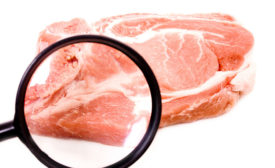Home » Keywords: » consumer trends report
Items Tagged with 'consumer trends report'
ARTICLES
Report suggests frequency of grilling does not necessarily equal more confidence.
Read More
Consumer Trends Report
2020 Consumer Trends Report: Checking off the claims
Consumers want products that meet their demand for health, convenience and a host of other claims; meal kits and delivery options are helping them reach those products and order more meat and poultry.
Read More
Consumer Trends Report
2019 Consumer Trends Report: Making connections
Consumers continue to seek high-protein options and are willing to pay for them, but they don't always associate meat and poultry as high in protein.
Read More
Consumer Trends Report
2018 Consumer Trends Report: Going long
Millennials continue to drive long-standing demand for better-for-you foods, transparency, convenience and exotic flavors.
Read More
Consumer Trends Report
2017 Consumer Trends Report: Knowing what they don't want
The tipping point on meat raised without antibiotics may have been reached, as more processors and restaurant chains listen to consumer demand.
Read More
2016 Consumer Trends Report: Searching for a story
Meat and poultry still play an important role in the American diet, but more consumers — particularly those in the younger generations — want the facts behind the meat they eat.
Read More
2014 Consumer Trends Report: For the love of protein
Rising meat prices have changed consumer shopping patterns, but meat and poultry remain on the menu.
Read More
2014 Consumer Trends Report
Consumers consider their own financial and health situations, along with flavors and quality of the product, when making their protein-purchasing decisions.
Read More
The National Provisioner's
2013 Consumer Trends Report
The specter of rising protein prices keeps 2013 hanging in the balance — is there a light at the end of this economic tunnel, or is it another train ready to beat the industry down?
Read More
Get our new eMagazine delivered to your inbox every month.
Stay in the know with The National Provisioner's comprehensive coverage of the meat and poultry processing industry.
SUBSCRIBE TODAY!Copyright ©2024. All Rights Reserved BNP Media.
Design, CMS, Hosting & Web Development :: ePublishing











